
After completed 45cm reflector ,I enjoyed watching galaxies and nebulas through single oculer. However it was always my dream to watch through large binocular telescope using low power wide field eyepieces. Binocular viewer is one solution, but available products are only for 1.25-inch size eyepieces and not suitable for large 2-inch size eyepieces.(Today Siebert Optics supplies some models, but in those days no manufacturere existed). So I began to study to make binocular viewer by myself little by little from 1999, but I could not find reasonable design instantly. It was a long way to find out simple practical design.
To scale up the 1.25-inch system(basic design is from microscope's bino viewer) to 2-inch system seems easy, but it is not practical since minimum inter-ocular distance becomes too large for human eyes.
It is important to locate eyepieces close together at minimum inter-ocular distance and mechanical parts do not intercept the beam from a prism to eyepiece, and also no lights come into mechanical housing from outside.
To design such a construction at minimum inter-ocular distance seemed very complicated. But I thought up with a box like shape construction that would be easily built. I began to build from 2001 and completed in that fall. However I had to modify the 45cm telescope to use with bino viewer. It took me for about half a year to shorten struts and attach counter weight for balance.
In 2002 at Ishikawa machi star light festival ( Fukushima prefecture in Japan) I could show cmpleted 45cm telescope with bino-viewer. It was really wonderful to watch deep sky object through wide field low power eyepieces(I use Unitron 32mm Wide Scan that make 84degree 62x) with two eyes. I felt like watching through space ship window!
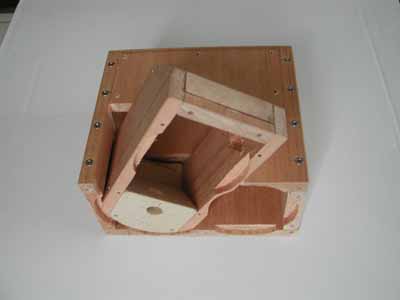
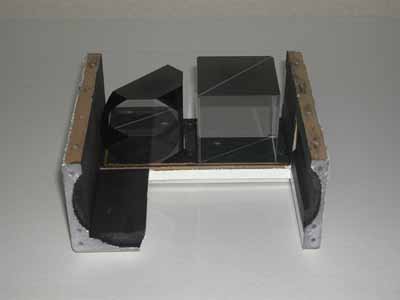
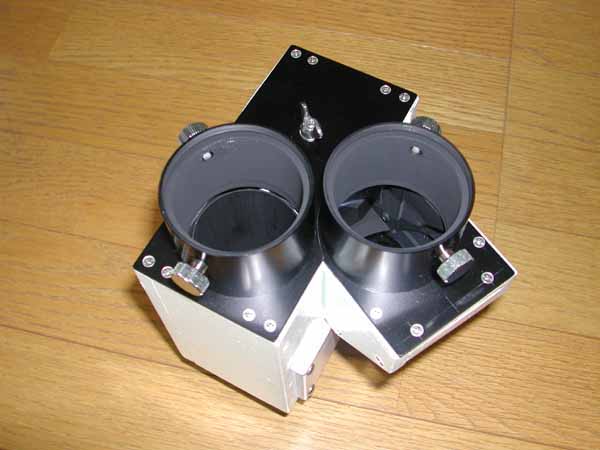

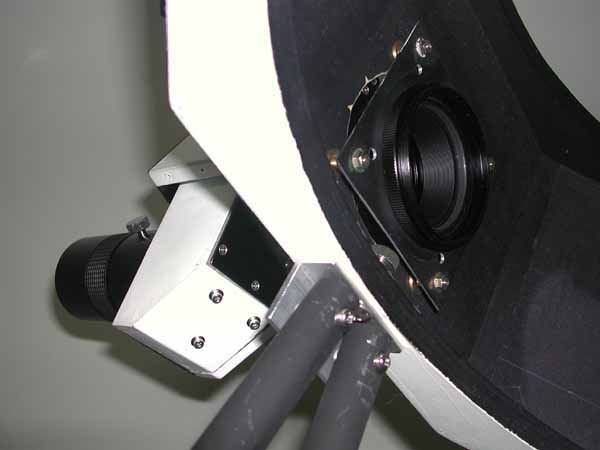

bino viewer's orientation is adjustable by loosening nut.
I added 7.5kgweight at the back of the mirror cell to counter-balance the binocular viewer around altitude axis.

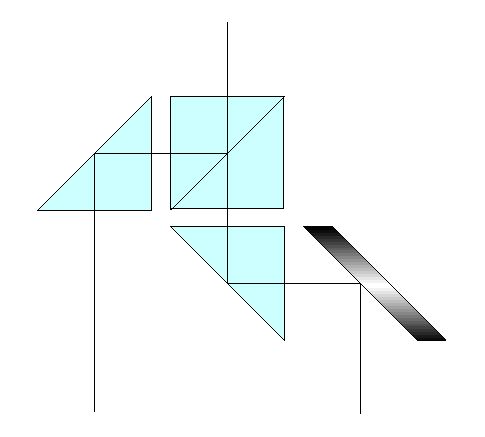
Optics are consist of a 50mm cube beam-splitter, a mirror and 2 right angle prisms(BK7). I uesed prisms instead of mirrors because it shorten the needed optical length for telescope. beam splitter is from Japanese manufacturer.(Sigma koki Co. ) It was expensive but essential part. 50/50%-transmit/reflect ratio with multilayer dielectric coat type.
Dimensions of optical elements
To determine the dimensions of optical elements, I made the diagram of the light pass shown below.
Very large cube beam splitter is needed if all the incoming converging rays have to pass through to the edge of the field of view of the low power eyepiece.
I allowed about half of the rays that come from the primary mirror to the edge of the field of view are cut off by the aperture of the beam splitter.
Of course all the rays that come to the center of the field of view from the primary mirror must pass through the beam splitter.
Assuming maximum diameter of the field stop is 46mm,the dimensions of the beam-splitter become 50x50x50mm with a little margin.
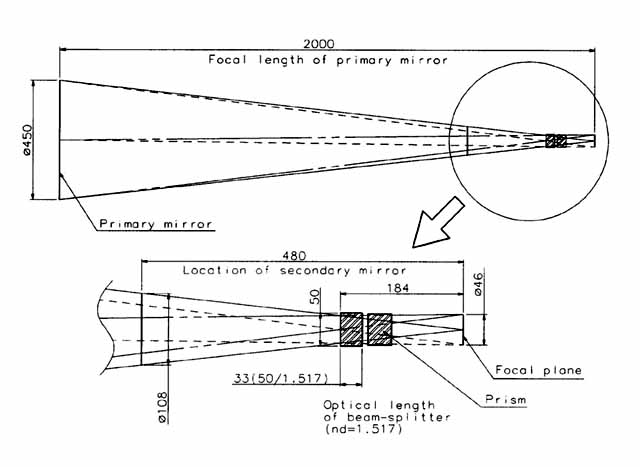
effective diameter of beam spitter: ƒÓ46mm
usable telescope's focal ratio: F/4.8
adjustable inter ocular distance: 60mm-85mm
optical length:193mm
beam splitter: 50mm cube
weight: 1620g (without helicoid focuser)